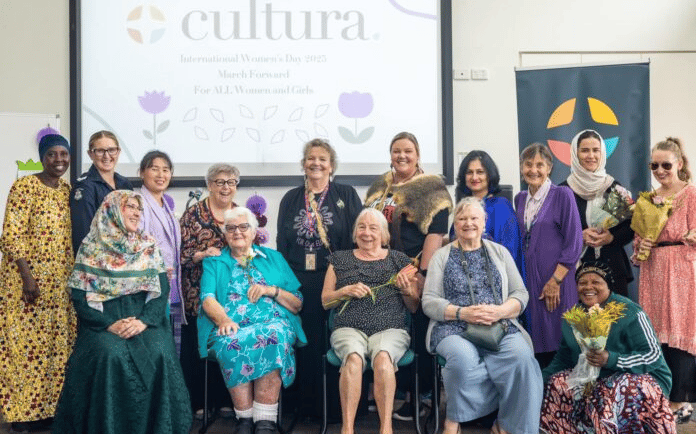New Skills, Real Work: Victoria’s Bold $15.2 Million Bet on Adult Learning
Victoria is committing $15.2 million to support adult learning pathways, bridging training into employment. This is a pivotal moment for workforce renewal, social inclusion, and the reclaiming of lifelong opportunity.v
PERSONAL DEVELOPMENT


When a government places real resources behind learning, it is making a statement about what it values: not just jobs, but people’s capacity to change direction, to adapt, to grow. Victoria’s announced investment of $15.2 million in adult learning pathways is one such statement. It signals that adult education will no longer be a backline program, but a frontline tool in shaping resilient, equitable futures.
This is more than funding. It is a commitment to capability, dignity, and systemic change.
A Grounded Approach to Adult Upskilling
Victoria already has an infrastructure in place: the Learn Local system, in which over 200 independent community organizations deliver subsidised education, pre-accredited training, and foundation skills across metropolitan and regional areas. Wikipedia These settings are trusted, nimble, close to people’s lives. They often teach the “bridge” skills—literacy, digital confidence, navigation of systems—that conventional vocational training can assume but often omit.
The $15.2 million infusion will strengthen these pathways, expand program offerings, and better link training to real employment outcomes. While the IndianSun article mentions the figure, it does not outline all mechanisms; the real value lies in how that funding is deployed—whether in support for pilot programs, in partnerships with industry, or in wrap-around supports that help learners stay the course. The Indian Sun
The strategy is coherent: align adult learning with sectors of demand, tie educational credentials to employability, and reduce friction in transitions. In a rapidly shifting labour market, people need pathways—not just ad hoc skill snippets.
Why This Investment Matters—Especially Now
1. Labour Markets Are Changing Rapidly
Automation, green transition, digitalization—these are compressing life cycles of skills. Job roles shift, requirements mutate, and people will have to reskill or “pivot” more than once. A robust adult learning ecosystem is less a luxury than infrastructure: the economic equivalent of roads and power.
2. Inclusion and Equity Depend on Access
Too often, adult learners—especially those from lower income backgrounds, adults returning to work, rural residents, people with interrupted education histories—are the ones left behind. When learning support is local, flexible, and integrated with employment pathways, the barrier shrinks. Victoria’s move says: we acknowledge adult learners deserve the same structural fairness as young entrants.
3. ROI on Social and Economic Fronts
When people can move into work, get more stable employment, engage more fully in community life, the return is both personal and systemic. Fewer long-term welfare dependencies, more tax base, more met demand in growing industries, less mismatch. Funding adult learning is a high-leverage investment.
Risks, Design Challenges, and What Success Requires
Money alone never solves things. How that $15.2 million is structured, governed, and anchored into systems will make the difference between durable transformation and ephemeral headlines.
Risk of fragmentation. If funds are allocated in siloes—some to digital skills, others to sectors, others to support—without integration, the pathways will remain patchwork.
Sustainability vs one-off grants. Adult learning is not a short burst. Learners often need repeat courses, ongoing support, mentoring. The funding should sustain programs over multiple years rather than one-time pilots.
Connectivity to industry. Training must be relevant. If adult learners complete courses that do not match employer demand, they will become frustrated. Partnerships with industry, sector bodies, and local employers are essential.
Support for learner continuity. Many adults balance life pressures: family, work, travel, health. Programs must provide flexible scheduling, child care subsidies, transport support, or hybrid delivery. Otherwise dropout rates will erode gains.
Measurement and iterative learning. The real test lies in outcomes: how many adult learners gain jobs, maintain employment, or use new credentials. Metrics must be tracked publicly, and programs adapted continuously.
A Vision Forward and a Gentle Push
At TMFS we believe that opportunity is not fixed at birth—it is shaped by pathways, systems, and courage. Victoria’s announcement is a welcome step, but not the finish line.
We will look for how that $15.2 million becomes life stories changed—not just numbers. For every funding round, we ask: did a parent retrain into a stable job? Did a regional learner find work near home? Did someone once shut out of education find agency again?
If you are a provider, start thinking how you might align your programs to this funding shift. If you are an employer, explore partnerships: co-design courses, offer placements, mentor adult learners. If you are a policy participant or advocate, hold the system’s feet to the promise: insist on transparency, insist on outcomes, and insist on scaling what works.
Victoria’s move is precisely the kind of policy pivot that can counter pessimism in growth, disparity, and dislocation. But only if the design, the partnerships, and the resolve match the ambition. Let this be the year adult learning stops being a backwater and becomes a backbone.
All rights belong to their respective owners. This article contains references and insights based on publicly available information and sources. We do not claim ownership over any third-party content mentioned.
